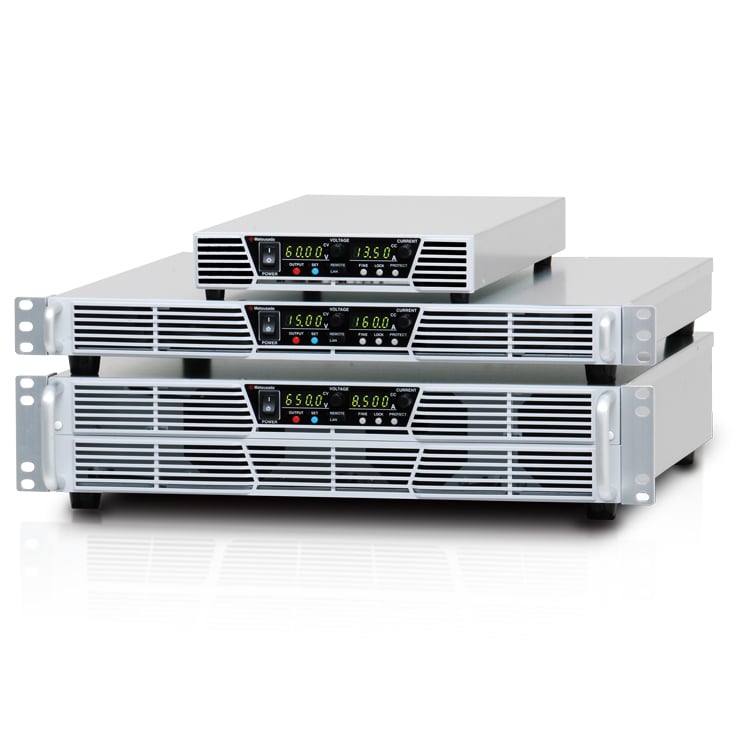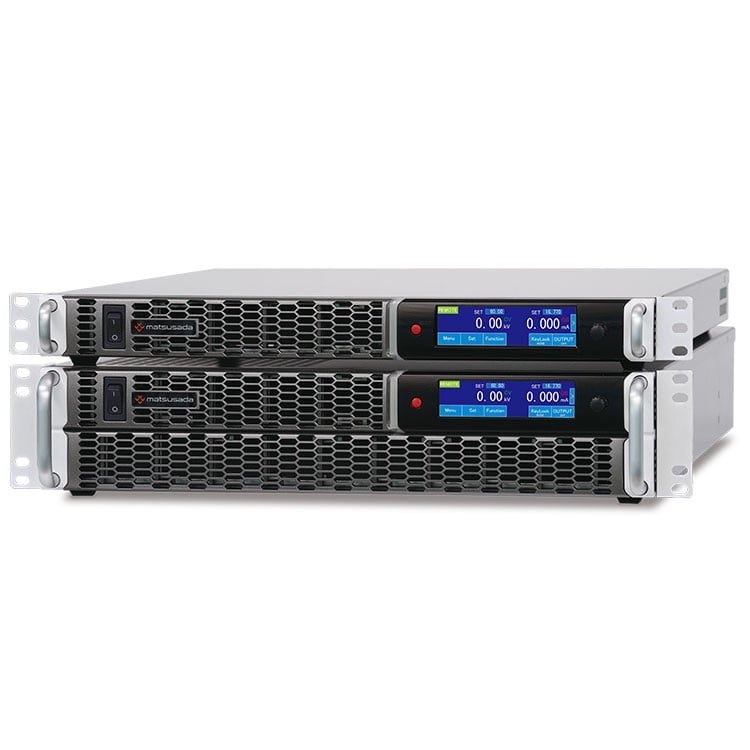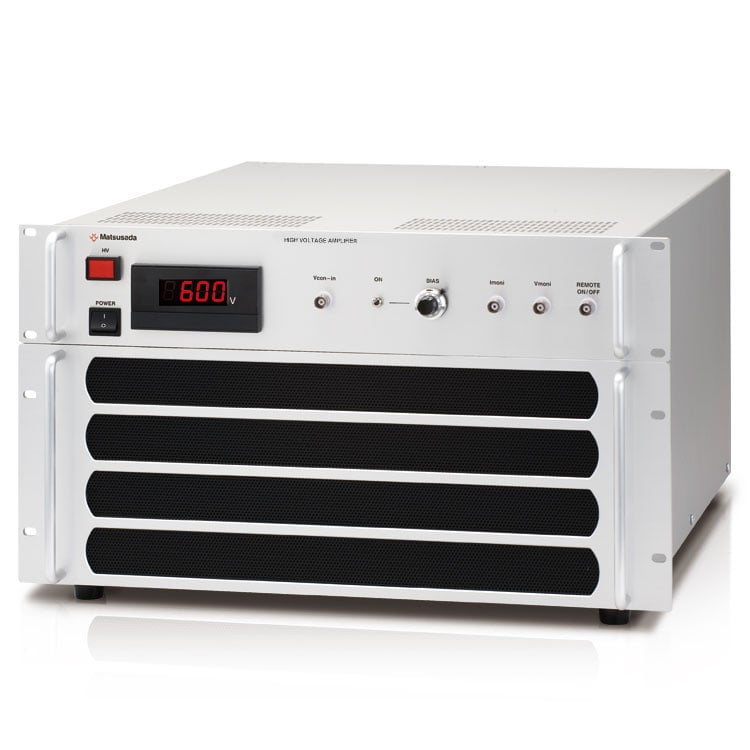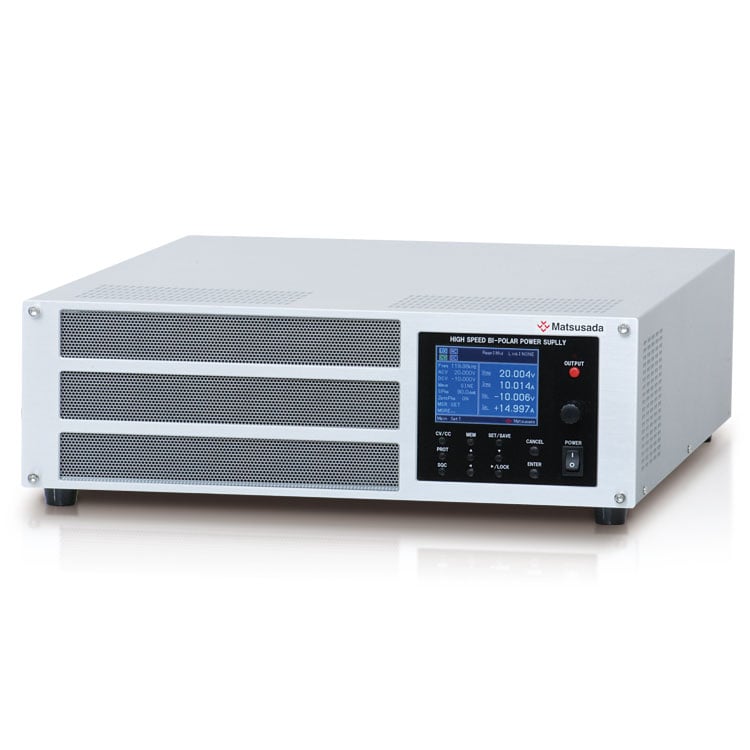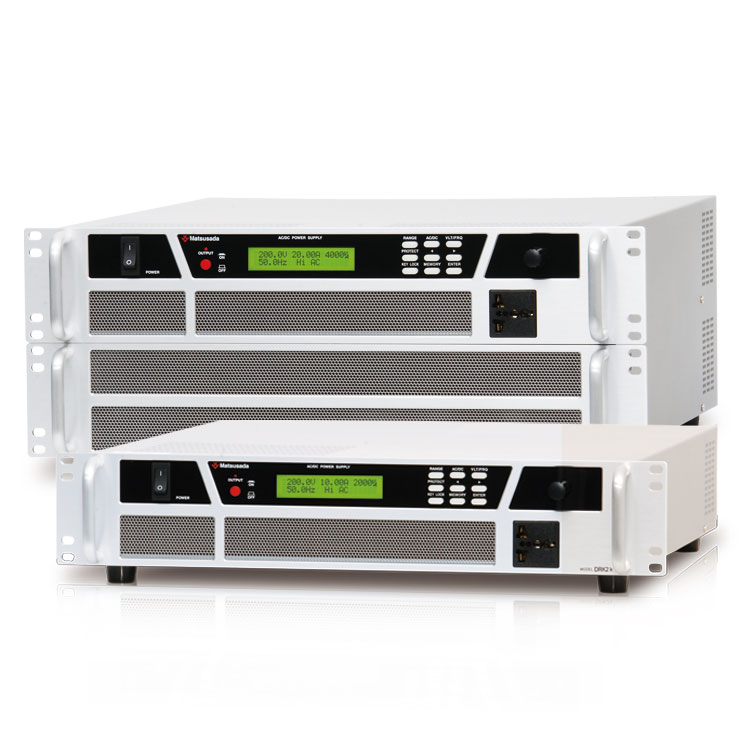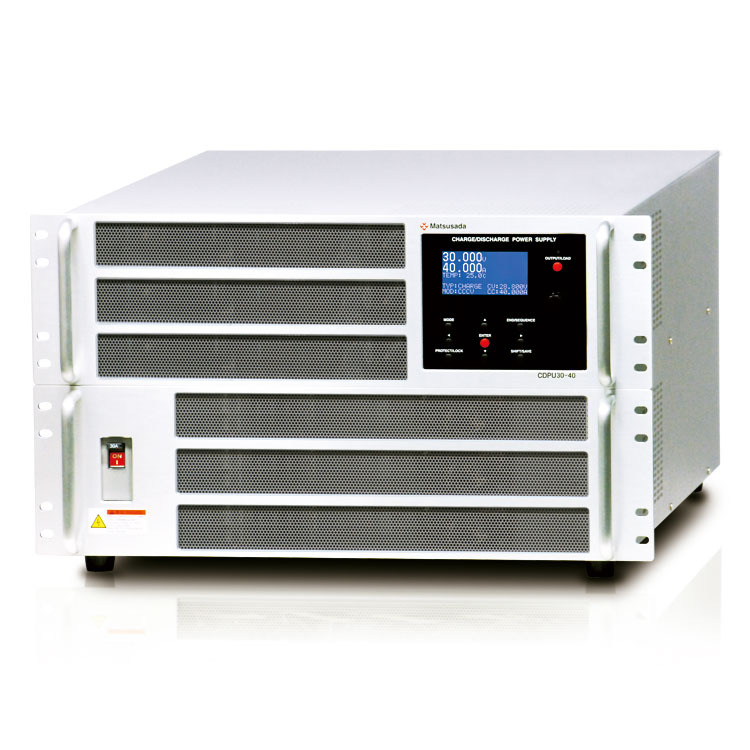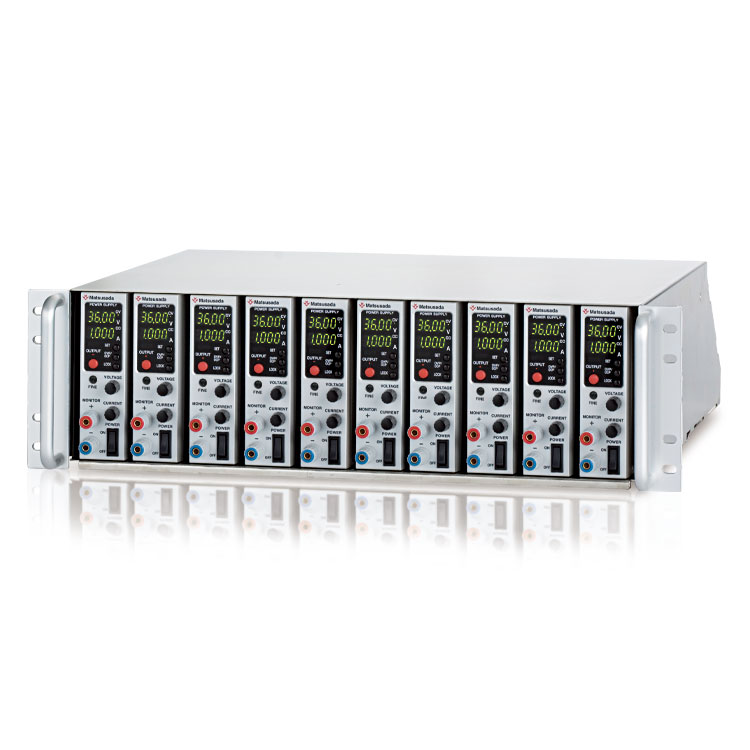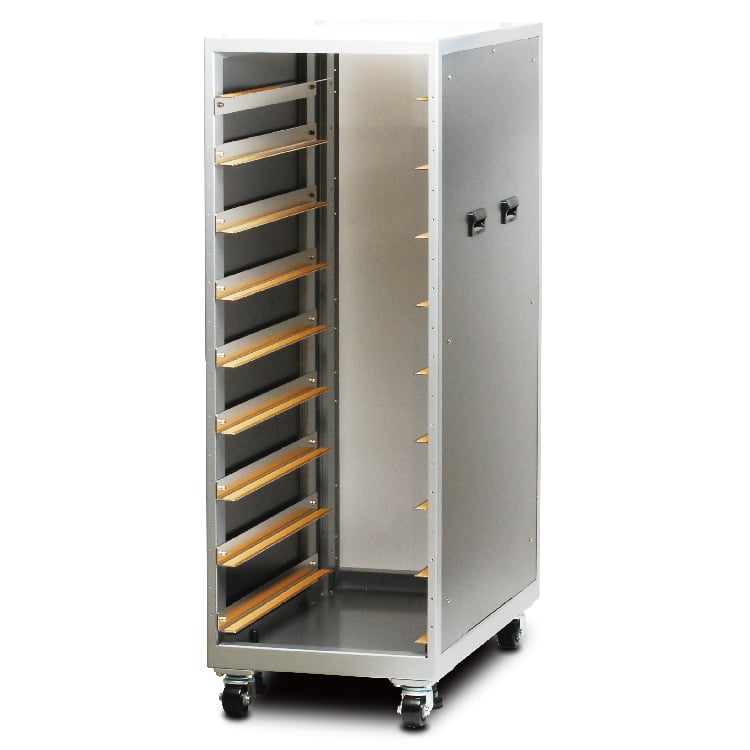The rackmount power supply is a core component of electronic systems and automatic test equipment(ATE). The unit can be placed within conventional 19-inch racks to supply steady and reliable power to vital equipment.
This article provides a comprehensive overview of rackmount power supplies. We will delve into the fundamental principles, various types available, key features to consider, and diverse applications across different industries.

Types of Rackmount Power Supplies
1. Rackmount DC Power Supply Unit
A Rackmount DC power supply is a particular kind of power supply unit. The most common is the AC-DC type, which uses an AC voltage source and converts it into DC voltage.
However, a Rackmount DC-DC power supply is also available that uses an existing DC voltage source and converts it to different DC voltage levels required by individual devices or systems. Data center server racks use DC-DC power supplies to convert high-voltage DC (HVDC) to the DC voltage required by servers, reducing conversion losses from AC.
These power supplies are frequently utilized in telecommunications, industrial automation, testing laboratories, and other applications where precise and reliable DC voltages are necessary. The main features include high efficiency, minimal ripple and noise, and protective systems to ensure reliable operation and safeguard connected equipment.
2. Rackmount High-Voltage Power Supply
When using rackmount high-voltage power supplies (HVPS), accuracy and stability in high-voltage output are crucial for specific applications. They are employed in medical equipment, industrial operations, and research labs. The output voltage range of HVPS devices is broad; it commonly ranges from kilovolts to hundreds of kilovolts.
The main features include adjustable output voltage and current, little noise and ripple, and safety features like arc detection and overvoltage protection. These power sources also feature advanced control and monitoring to improve accuracy and safety.
3. Rackmount High-Voltage Amplifier
Rackmount high-voltage amplifiers raise low-voltage signals to high-voltage levels. They are frequently employed in industrial control systems, particle accelerators, and scientific research. These amplifiers feature high gain, wide bandwidth, and low distortion properties.
Rackmount high-voltage amplifiers are essential when precise and amplified high-voltage signals are needed. The units are invaluable due to features such as variable gain control, input offset adjustment, and output protection circuits.
4. Bipolar Power Supply on a Rack
Bipolar rackmount power supplies are adaptable power sources for a range of uses. They are appropriate for applications requiring dual polarity power since they can produce positive and negative output voltages. They are used in many electronic circuits and test apparatus.
The unit features variable output voltage and current limits for polarities. Additional features include remote sensing for voltage adjustment at the load and tracking mode to maintain a constant ratio of positive and negative outputs.
5. Rackmount AC Power Source
Rackmount AC power sources are adaptable tools for simulating different AC power scenarios to test electrical systems and devices. They provide waveform parameters, frequency, and voltage adjustments. The units are frequently used in compliance testing, quality control, and product development.
Key features include built-in measurement capabilities, control over harmonic distortion, and programmable output sequences. Rackmount AC power sources offer dependable power for electrical and electronic devices under varying power circumstances.
6. Rackmount Electronic Loads
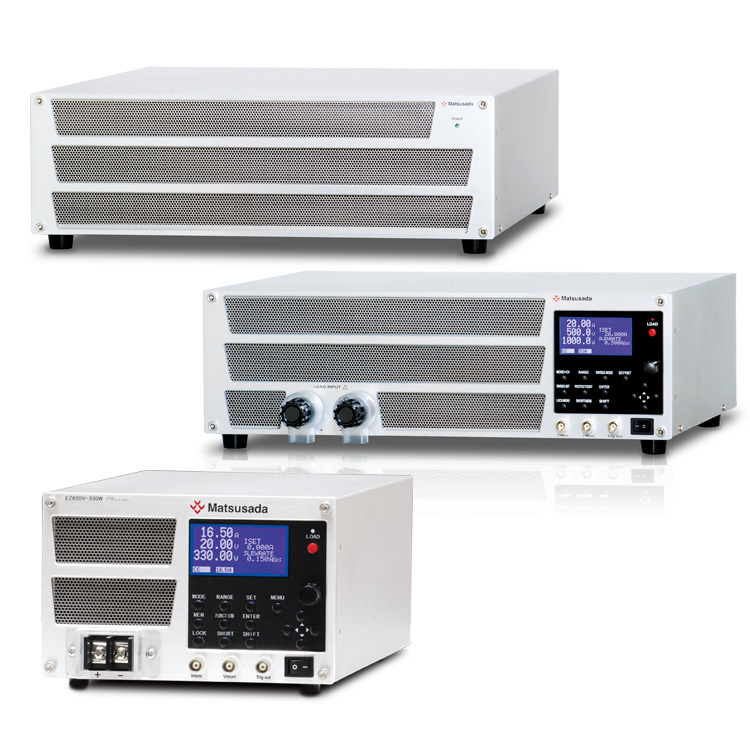
Rackmount electronic loads simulate electrical loads for testing batteries and other power sources. These loads are necessary to assess the effectiveness and efficiency of power sources in different operating scenarios.
Rackmount electronic loads are frequently utilized in research labs and quality control procedures. The power supply units have programmable load profiles, current, and resistance settings that may dissipate a certain amount of power.
7. Rackmount Battery Cycle Tester
Rackmount battery cycle testers are specialty devices that assess battery longevity and performance. Under controlled circumstances, they automate the process of charging and discharging batteries, offering information on battery cycle life, capacity, and efficiency.
Rackmount battery cycle testers are frequently used in battery research, development, and manufacture to evaluate battery performance and reliability. Some of the main characteristics include data logging, safety features, and configurable charge and discharge patterns.
8. Rackmount Shelves
Rackmount shelves offer easy and well-organized storage inside standard 19-inch racks for various equipment. They are available in full-rack and half-rack configurations, among other sizes. Devices such as power supplies, amplifiers, test equipment, and others are frequently stored on rackmount shelves.
The main features of the power supply unit include adjustable mounting and cable management. Rackmount shelves guarantee the correct arrangement and accessibility of installed devices while optimizing space utilization within equipment racks.
Matsusada Precision Rackmount Power Supply
Matsusada Precision Rackmount Power Supplies is a reputable brand known for compact size, efficiency, minimal heat generation, and low noise. They are employed in many fields, such as motors, semiconductors, electric cars, and research and development.
Additionally, Matsusada provides a range of high-voltage power supplies, such as tabletop and rack mount types. Their voltage range varies depending on the series but can reach 200 kV. Here are the key features of the Matsusada Precision rackmount power supply unit.
1. Compact and high power
Matsusada Precision rackmount power supplies are compact units. Their design optimizes performance without sacrificing space efficiency, making them appropriate for settings with little space.
Despite its compact size, the unit produces a substantial amount of power. Because of its broad range of support, it can be used for various industrial applications. The high power density ensures that performance is maintained even in confined areas.

2. High Efficiency for Electricity Saving
Because of their exceptional efficiency, Matsusada Precision Rackmount Power Supplies help you save money on electricity. Additionally, they feature a low inrush current, which may shield your devices.
The power supply improves operational cost-effectiveness by reducing energy waste. Its high efficiency also helps ensure environmental sustainability, making it a perfect option for eco-conscious businesses.
3. Low heat generation and low-cost air cooling
Matsusada Precision Rackmount Power Supplies produce little heat, so they only require slight cooling. The unit does not heat up even under high loads, so there is no need for complex cooling solutions.
Low heat ensures that the device performs dependably even under high load. Reduced heart generation makes it viable for long-term use because it makes maintenance easier and lowers operating expenses.

4. Low Noise/High Stability
Matsusada Precision rackmount power supply operates with very little noise. Low noise levels result in a quiet atmosphere. It ensures a calm working environment for dealing with sensitive equipment.
The power supply outputs consistent power. It maintains precise voltage levels, shielding equipment from fluctuations in power. The reliability of the performance enhances the reliability of the system.
Basics of Rackmount Power Supply
What is Rackmount Power Supply?
A Rackmount power supply provides steady and reliable power to vital equipment. The unit is placed within conventional 19-inch racks. Rackmount power supply units are built with high power density, thermal control, and optimal space utilization in mind.
The fundamental function of a rackmount power supply is to provide clean, steady, and reliable power to the attached devices. They feature numerous protective methods to safeguard against voltage fluctuations, surges, and overloads.
Additionally, rackmount power supply units incorporate remote monitoring and control capabilities, hot-swap functionality, and redundant power options for excellent reliability.

Key Points of Rack System Construction
A well-designed rack system is vital for efficient and dependable operation of electronic equipment. Here are some crucial elements to consider while selecting a rack system.
Size of 19 inches Racks
The height and mounting holes of rackmount power supplies are standardized. You need to select server racks with consideration given to the size of the power supply unit. The standard width of the server rack should be 19 inches. However, 23-inch widths aref also used in some industries.

Power Requirements
The first step is to establish the overall power requirements of all equipment housed in the rack. It will help you select a power distribution unit (PDU) with a suitable capacity.
Choose a PDU that provides sufficient outlets and circuit protection for your equipment. Consider the types of plugs and connectors required by your equipment and the voltage and current specifications. It is important to be able to cut off the power safely, and in systems where the power supply must not be interrupted. Plus, having a backup power source in the form of a battery is also important.

Rack Size and Compatibility
The size and weight of the equipment that will be installed should be considered when selecting the rackmount power supply.
Verify that the rack and the equipment that will be installed are compatible. It entails verifying the rack's equipment size and mounting hole patterns. Some racks have a cover on the front to help shield the equipment from dust and debris.

Cooling
Air cooling is used in most rack systems to keep the equipment cool. Usually, fans that pull air in from the front of the rack and release it out the back are used to accomplish this.
Make sure that the equipment is adequately ventilated. Keep the air vents unobstructed and distribute the equipment evenly throughout the rack.

Key Points of Rack System Construction
Power sources with a versatile design that fits neatly into typical 19-inch equipment racks are called rackmount power supplies. They are essential in various sectors and applications due to their small form factor, high power density, and dependable operation. Let's look at some typical applications for rackmount power supplies:
1. EVs (Electric Vehicles)
A rackmount power supply is used in EV development and testing. The power supply provides high currents and voltages for effective and secure EV charging.
The rackmount power supply is used in EV testing to replicate real-world driving conditions and assess the longevity and performance of power electronics and batteries. Their customizable output characteristics make precise testing scenarios possible, resulting in safer and more reliable electric vehicles.

2. Measurement and Testing
Rackmount power supplies power measurement and testing tools in research labs. These units offer reliable and precise control for various testing applications, such as circuit validation, product certification, and electronic component characterization.
Due to the versatility of rackmount power supplies, engineers can precisely modify voltage and current levels, simulate various operating circumstances, and monitor power consumption. They also ensure the precise operation of testing and measuring devices in labs.

3. Automatic Testing Devices (ATE)
Rackmount power supplies are frequently included in automated test equipment (ATE) systems to supply power to the devices under test (DUTs). Because these power sources have programmable output characteristics, automated testing procedures can be carried out without requiring human interaction.
Rackmount power supplies in ATE systems must supply precise and steady power to guarantee reliable test results. They may also incorporate features like remote monitoring and control capabilities for seamless integration into the ATE environment.

4. Testing for Burn-in
Burn-in testing is essential for assessing the long-term dependability of electronic systems and components. Rackmount power supplies are necessary for this operation because they give the DUTs long stretches of uninterrupted power.
Rackmount power supplies are usually set up to operate at high temperatures and stress levels during burn-in testing to expedite possible failure processes. This thorough testing aids in locating and removing defective parts before their release in the market.

5. Semiconductor Manufacturing
Rackmount power supplies are an integral part of semiconductor manufacturing. They supply power to various wafer fabrication tools and systems, such as ion implanters, etching tools, and deposition systems.
Specialized rackmount power supplies are occasionally integrated into semiconductor production equipment. These integrated power sources provide a precise and steady power supply for crucial processes that guarantee high-quality semiconductor devices.

6. Testing Tools
Rackmount power supplies are widely employed in various sectors to supply power to diverse testing equipment, including power meters, signal generators, oscilloscopes, and spectrum analyzers.
The accurate operation of testing equipment depends on the supply of clean, constant power. Rackmount power supplies' low ripple and noise ensure minimum interference and guarantee accurate readings.

Conclusion
Rackmount power supplies have a broad range of applications. These power sources are essential to current technology and innovation, enabling everything from electric vehicle power to sophisticated testing and manufacturing processes.
The need for a rackmount of power supplies is anticipated to increase as technology develops. Rackmount power supplies are crucial in today's technological environment, whether used to power electric vehicles, facilitate scientific study, or assist industrial processes. The units are perfect for satisfying the ever-increasing power demands of contemporary electronic systems due to their small size, high power density, and configurable features.
FAQs
What is a "rack" in rackmount power supply?
A rack is a conventional frame or enclosure that holds electronic equipment. It organizes and structures power supplies, servers, switches, and other components.
IEC 60297 is an international standard published by the International Electrotechnical Commission (IEC) that specifies the mechanical dimensions for 19-inch racks, sub-racks, and plug-in units used to mount electronic equipment. These standards ensure compatibility and interchangeability between equipment from different manufacturers. Rackmount power supplies are made with precise measurements and mounting holes to make it simple to mount them into these racks.
What is a suitable rack for storing rackmount power supplies?
A regular 19-inch rack is a good choice for storing rackmount power supply. These racks come in a range of heights, expressed in rack units (U). Every rack unit has a height of 1.75 inches (44.45 mm).
The size and quantity of the power supply and other equipment to be installed determine the rack height selection. Rack heights of 42U, 45U, and 48U are typical. Also, consider the rack's weight capacity to ensure the fitted equipment can be supported securely.
Are there any safety measures to be taken when keeping a rackmount power supply in a rack?
Follow these safety tips when keeping a rackmount power supply in a rack.
- Correct Mounting: Make sure the suitable screws or fasteners are used to attach the power supply to the rack rails firmly.
- Weight Distribution: To prevent stress or damage, uniformly distribute the power supply's weight over the rack rails.
- Ventilation: Allow enough room around the power supply unit to avoid overheating.
- Cable management: Arrange cables properly to prevent clutter and reduce the risk of slip and fall accidents.
- Grounding: Ensure the power supply and rack are appropriately grounded to avoid the risk of an electrical shock.
Is there any difference between a server and an ATE rack type?
A regular 19-inch rack is a good choice for storing rackmount power supply. These racks come in a range of heights, expressed in rack units (U). Every rack unit has a height of 1.75 inches (44.45 mm).
The size and quantity of the power supply and other equipment to be installed determine the rack height selection. Rack heights of 42U, 45U, and 48U are typical. Also, consider the rack's weight capacity to ensure the fitted equipment can be supported securely.





